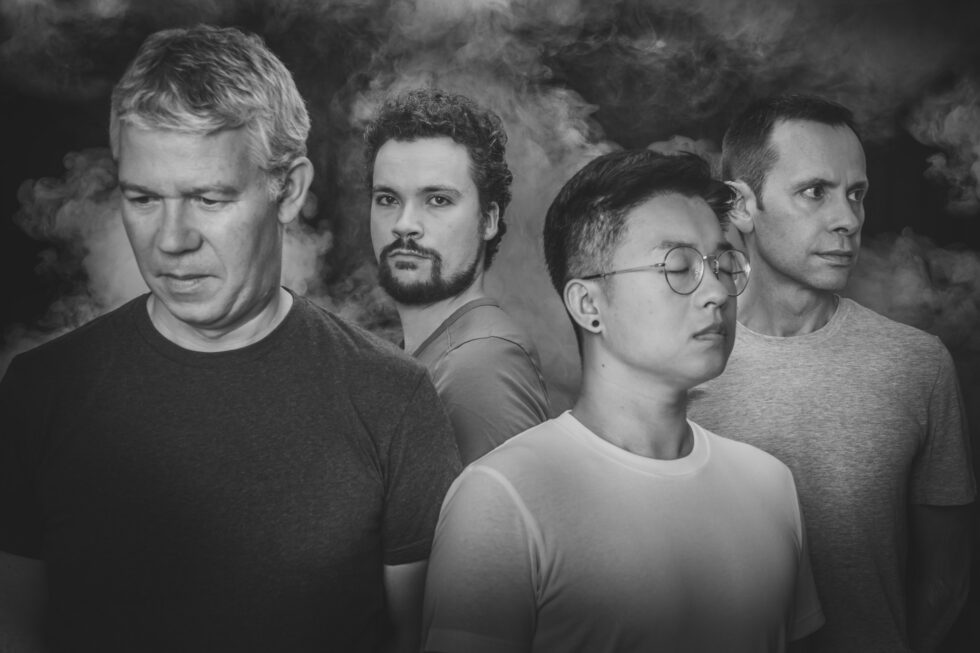
Pianist Leon McCawley
YORK Concerts continued its exciting and innovative series of concerts with a piano recital by Leon McCawley. The pianist is well known to concert goers at this series and his invitation to return to perform music by Scarlatti, Beethoven Chopin and Franck was eagerly anticipated, and with good reason.
As we all know, Domenico Scarlatti (1685–1757) was an Italian composer renowned for his prolific output of keyboard sonatas, an impressive 555 pieces, to be exact. As a Baroque composer with a visionary eye, he was noted for his radical, innovative and fresh approach.
However, the opening Sonata in F minor, K.69, appears to be a standalone work and a rather conservative one. Leon McCawley’s performance was incredibly tender and emotionally charged, giving it a haunting quality. To be honest, it sounded (quite) like Bach. The way the pianist delicately caressed the cantabile imitations, enhanced by the subtle ornamentation, was very moving.
By contrast, the performance of his Sonata in C, K.159 positively zipped along without a care in the world. The phrasing was crisp and clear, and the elegant melodic embellishments added to the sense of spontaneity.
The opening galloping rhythms and quasi fanfare-like motifs presumably gave the work its nickname La Caccia (The Hunt). Another striking aspect was McCawley’s embrace of the music’s theatrical quality, as evident in the leaps between registers. However, it was the darker introspection of the F minor work that left a lasting impression, until we bumped into Beethoven, that is.
As far as charm and elegance go, it doesn’t get much better than McCawley’s interpretation of Beethoven’s standalone Andante Favori in F major, WoO 57. It was originally intended as the second movement for the radical Waldstein Sonata but was criticised as being too long and replaced with a short Introduzione. Given that it is about nine-ten minutes long, this was surely a good call.
Leon McCawley possesses a remarkable ability to captivate the listener. The playing was characterised by richness, nuance and warmth. Moreover, like the entire programme, the performance conveyed an expressive depth that left a profound impact.
Beethoven humorously expressed his wish that he had never composed the piece, stating, “I cannot walk down a street without hearing it”. Unfortunately, for me, it evokes the Pemberley soirée from the 1995 BBC TV adaptation of Pride And Prejudice. In this scene, Georgiana Darcy plays the piece in response to Elizabeth Bennet’s rendition of “Voi Che Sapete” from Mozart’s The Marriage Of Figaro. Amidst the romantic atmosphere, love was in the air and here too, the cantabile melody did feel like a love song.
Beethoven’s Piano Sonata No. 21 in C major, Op. 53 (Waldstein) is a musical masterpiece that continues to captivate audiences. The opening pianissimo was portrayed as a thing of beauty, but one with a government health warning. However, as the music progressed, the simple crescendo built tension and anticipation, leading to a dramatic and powerful climax.
What truly impressed me about this performance was the controlled elegance and precision of the playing. The dramatic shaping of the music was seamless and well-executed, without resorting to excessive virtuosity or raw power.
While the sonata undoubtedly conveys a sense of grandeur and monumentalism, it does so without the testosterone-fuelled intensity that some pianists find necessary to fully express its emotional impact.
The Introduzione: Adagio molto had a mysterious, even dark quality that created a hypnotic spell that seamlessly blended into the Rondo: Allegretto moderato – Prestissimo finale. McCawley’s playing here was simply impeccable. There was a genuine sense of majesty combined with the driving, flowing lyricism. Of course, the musical fireworks display at the end of the journey eventually erupts like a volcano, but it did so beautifully.
After a well-deserved 20-minute interval, we were treated to a programme of 19th-century Romantic music, featuring Chopin and Franck. Chopin’s Trois Écossaises, Op. 72, No. 3, were simply delightful.
Each of the three pieces exuded a charm and elegance that we associate with these popular and lively dances. No. 3, written in D-flat major, is perhaps the most well known of the set. The pianist clearly enjoyed the witty and syncopated rhythm, as well as the cheerful character of the piece.
The performance of the composer’s Berceuse, op.57 was the highlight of the second half. For me, obviously. The berceuse is a lullaby, with the left hand gently rocking the cradle while the right hand sings a series of increasingly intricate variations.
The pianist’s control was remarkable; the delicate ebb and flow of the music had a Zen-like quality. In the end, as the lullaby had sung itself to sleep, there was a feeling of absolute relaxation. The performance was simply sublime.
The performance of Chopin’s Barcarolle in F-sharp, op.60 once again projected an assured grasp of all that mattered. The rubato phrasing shaped and caressed the melodies, while the balance between the right-hand song and the left-hand rocking ostinato effectively imitated the rhythmic sway of a gondola.
While there was certainly a dramatic climax, the serene coda concluded the performance on a note of tranquillity, suggesting a sense of harmony and contentment.
The programme concluded with César Franck’s Prelude, Chorale et Fugue. Undoubtedly, this work stands as one of the great Romantic piano compositions. Franck’s ingenious incorporation of Bach-like counterpoint, coupled with the virtuosity of Franz List and his distinct French style, creates a masterful blend of musical elements.
The issue for me is that I don’t really ‘get it’. It is not one of my favourite piano works, even when it is performed as brilliantly as this. The Prelude, with its rich, searching chromaticism, technically brilliant arpeggios, the Chorale, with its rich processional quality and organ-like textures and references to Wagner’s Parsifal, obviously, left me looking inside from the outside.
Ironically, it wasn’t until Leon McCawley’s performance of the Fugue, that most disciplined, abstract of forms, that I actually emotionally engaged with the work. Mind you, it was worth waiting for.
Review by Steve Crowther












